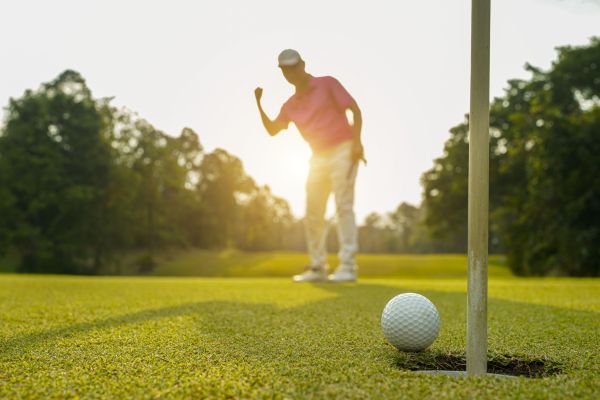
Golf is often perceived as a leisurely activity, yet every time you take a shot, you’re engaging the hips, back, legs and arms. The repetition of gripping and swinging a golf club, coupled with potentially poor form, can place significant strain on these areas of the body.
Learn about common golf injuries and prevention tactics to reduce their occurrence.
Why Golf Players Experience Injuries
During golf season, playing 18 holes every week can eventually result in an injury if you:
- Keep doing the same moves over and over without a significant break. This may occur as you train to improve your swing.
- Using poor form as you hold or swing the club.
- Failing to warm up before starting a round.
- Improperly turning or swiveling, which places strain on the spine.
- Holding the club too tightly.
Types of Golf Injuries
Golf injuries often stem from how you swing, repetitive movements or poor form.
Rotator Cuff Injuries
If you notice shoulder pain every time you swing a club, you may have a rotator cuff injury. The rotator cuff is comprised of four muscles intended to stabilize the shoulder. A torn or impinged muscle or tendon can result in swelling, causing the soft tissue to press against the bone and lead to pain. You may further notice the sensation intensifies when you raise your arm over your head.
The injury often goes back to poor form or repeatedly practicing your swing.
Tennis and Golfer’s Elbow
Both injuries are a form of tendonitis. Actually more common among golfers, tennis elbow involves an inflamed outer tendon. On the other hand, golfer’s elbow affects the inner tendon.
Both can occur from a combination of factors, including repetitive motion that places strain on these tendons, poor form or an improper swing. In the latter case, players may develop these conditions by overusing the forearm.
Tendonitis
Golfers can also experience tendonitis of the hands and wrists from repetitive use and a too-tight grip. With time, you may find that your hands tire out or you have difficulty gripping a golf club.
Back Pain
Your swing places rotational stress on the spine and surrounding muscles. This motion, plus bending over to take a shot, places hours of strain on the lower back, leading to pain and injury.
Knee Injuries
The rotational motion used to swing places stress on your knees. Not warming up these muscles, shoes without sufficient arch support or a lack of strength training outside of the sport may cause pain over time. In addition to a proper warmup, consider wearing a knee brace for more support.
Hip Injuries
Twisting your hips places adduction and flexion force on this area of the body. Poor form, repetition and failing to warm up may contribute to a back injury or groin strain.
Other Injuries
Improper mechanics can also impact:
- Hands and fingers, including trauma or a repetitive strain injury to the wrist.
- The neck, including shortened muscles and spasms from not warming up.
- Feet and ankles, which may be positioned incorrectly or absorb the force from your swing as it passes down your legs.
Preventing Golf Injuries
Golfers are advised to take a break from the game to rest and reduce inflammation. From here:
- Think about strength training, improving flexibility and properly warming up before physical activity. Stretches should focus on the trapezoid, pectoral and leg muscles.
- Work with a physical therapist to refine form and mechanics to reduce strain on the body.
- Take breaks during a round and cool down after all 18 holes.
Concerned about a golf injury? Sign up for Integrated Rehab’s golf performance program to improve your swing and body mechanics. To learn more, contact us today.

